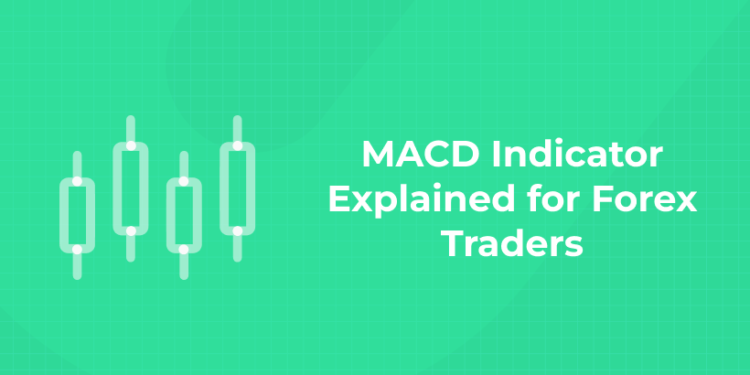Table of Contents
Introduction
In the world of forex trading, successful traders use many strategies and tools to read the market and make decisions. One of the most popular and widely used tool in technical analysis is the MACD Indicator (Moving Average Convergence Divergence). This indicator helps traders to identify trends, reversals and momentum, making it a must have tool for both new and experienced forex traders.
Understanding how the MACD Indicator works is key to success in forex market. In this post we will go deep into what is MACD Indicator, how it works and how forex traders can use it to read the market signals and execute trades better.
Technical Analysis in Forex Trading
1: What is a stock?
Technical analysis is part of forex trading, where traders use past market data to forecast future price movements. Fundamental analysis looks at economic, political and financial news, technical analysis looks at price charts and market indicators. Traders use tools like moving averages, trend lines and indicators like MACD to analyze price movements, identify patterns and predict future trends.
Learn Forex Trading from the Experts! Join for Free Demo!
What is MACD Indicator?
MACD Indicator is one of the most popular technical analysis tool in forex trading. Developed by Gerald Appel in late 1970s, MACD Indicator helps traders to identify the direction and strength of trends by showing the relationship between two moving averages of a security’s price. It’s a momentum oscillator that tracks the convergence and divergence of these moving averages.
MACD Full Form
MACD stands for Moving Average Convergence Divergence. The name itself explains the indicator, how two moving averages converge (come together) or diverge (move apart) and gives signals for trend reversals and entry/exit points.
MACD Components
The MACD Indicator has 3 parts:
- MACD Line: This is the 12-period EMA minus the 26-period EMA. The MACD line goes above and below zero and is a measure of market momentum.
- Signal Line: The Signal Line is a 9-period EMA of the MACD Line. It’s the trigger for buy and sell signals. When the MACD line crosses above the Signal Line it’s a buy signal, when it crosses below it’s a sell signal.
- Histogram: The histogram is the difference between the MACD Line and the Signal Line. It shows how the two lines are diverging or converging. When the bars are above zero it’s positive momentum, when they’re below zero it’s negative momentum.
With these 3 parts traders can gauge the direction and momentum of price action and use the MACD Indicator to find trading opportunities in the forex market.
| Achieve Financial Freedom with these courses? | |
| Forex Trading Course | Stock Market Trading Course |
How to read MACD Signals
The MACD Indicator has several signals that traders can use to make a decision:
1. MACD Line Crossover
The most common signal is the MACD Line crossover. When the MACD Line crosses above the Signal Line it’s a buy signal, when it crosses below it’s a sell or short signal.
2. Price vs MACD Divergence
Another signal is the divergence between the price of a currency pair and the MACD Indicator. Bullish divergence is when the price makes lower lows but the MACD Indicator makes higher lows. This can be a reversal from a downtrend to an uptrend. Bearish divergence is when the price makes higher highs but the MACD Indicator makes lower highs. This can be a reversal from an uptrend to a downtrend.
3. Histogram
The histogram is also useful for forex traders. When the bars get bigger it means the trend is getting stronger, when the bars get smaller it means the trend is losing momentum. The histogram can give you early warning of reversals or continuations.
MACD Pros and Cons
The MACD Indicator has many advantages but like any tool it has some disadvantages too:
MACD Pros
- Simple: Easy to understand for beginners.
- Trends: MACD helps you to identify both strength and direction of trends, great for trend following strategies.
- Flexible: Can be used on any time frame, from intraday to position trading.
- Convergence/Divergence: Can spot divergences between MACD and price trends to identify trend reversals.
Cons of MACD
- Lagging Indicator: Since MACD is based on moving averages it’s a lagging indicator, it can sometimes signal a trend change after the trend has already started.
- False Signals: In volatile or choppy markets MACD can generate false signals and lead to unprofitable trades.
- Limited in Range Bound Markets: MACD is less effective in range bound markets where prices are sideways. It performs best in trending markets.
While MACD is a great tool for forex traders, use it in combination with other indicators and strategies to get the most out of it.
Conclusion
The MACD Indicator is one of the most powerful and versatile tools in a trader’s arsenal. It can measure trend direction and momentum, making it a must have in technical analysis. By learning how to read MACD signals you will be able to make better trading decisions and increase your chances of success in the forex market.
But remember no tool can guarantee success. The MACD Indicator is powerful but should be used with other technical analysis tools and market knowledge to create a solid trading strategy. As you continue to improve your trading skills consider joining Entri’s Forex Trading Course and get the tools and knowledge to navigate the forex market and become a better trader.
Stock Market Training Reviewed & Monitored by SEBI Registered RA
Trusted, concepts to help you grow with confidence. Enroll now and learn to start investing the right way.
Know moreFrequently Asked Questions
What is the MACD Indicator in forex trading?
The MACD Indicator (Moving Average Convergence Divergence) is a popular technical analysis tool that helps forex traders identify trends, momentum, and potential reversal points in the market.
What are the main components of the MACD Indicator?
The MACD Indicator has three main components: the MACD Line (difference between 12-period and 26-period EMAs), the Signal Line (9-period EMA of the MACD Line), and the Histogram (difference between the MACD Line and the Signal Line).
How does the MACD Line crossover signal potential trades?
When the MACD Line crosses above the Signal Line, it indicates a bullish (buy) signal. When it crosses below the Signal Line, it indicates a bearish (sell) signal, suggesting the trend may reverse.
What does the MACD Histogram represent?
The MACD Histogram shows the difference between the MACD Line and the Signal Line. Growing bars indicate increasing trend strength, while shrinking bars suggest weakening momentum.
Can the MACD Indicator be used alone for trading decisions?
While MACD is powerful, it’s best used in combination with other indicators and trading strategies. Relying on MACD alone may lead to false signals, especially in volatile or range-bound markets.
What is divergence in the MACD Indicator?
Divergence occurs when the price moves in one direction while the MACD Indicator moves in the opposite. A bullish divergence (price making lower lows while MACD makes higher lows) suggests a potential uptrend reversal, while bearish divergence suggests a potential downtrend reversal.
What are the advantages of using MACD in forex trading?
MACD is easy to use, helps identify trend direction and strength, and can work across different timeframes. It also provides convergence and divergence signals, aiding in spotting trend reversals.
What are some limitations of the MACD Indicator?
The MACD is a lagging indicator, meaning it may signal after a trend has already begun. It can also produce false signals in choppy markets and may be less effective in range-bound conditions.
Is MACD effective on all timeframes?
Yes, the MACD Indicator can be used on various timeframes, from intraday to weekly charts, but its effectiveness depends on market conditions. Traders often adjust settings to suit specific timeframes.
How can I learn more about using the MACD Indicator effectively in forex trading?
For an in-depth understanding, consider Entri’s Forex Trading Course, which covers MACD and other essential tools, helping traders apply technical analysis effectively in the forex market.











